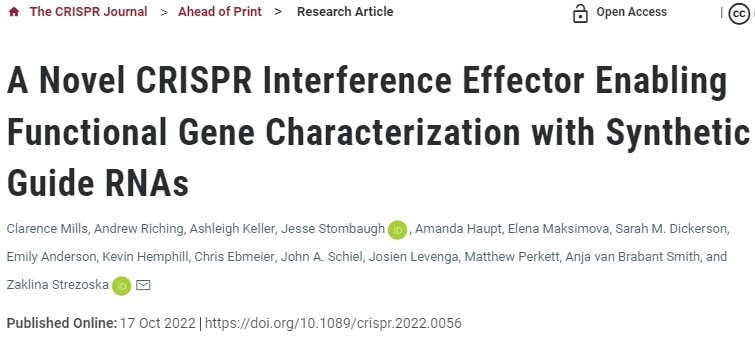Learn how our CRISPRi platform uses a novel dCas9 fusion protein and synthetic sgRNA to provide an improved workflow for gene characterization and arrayed screening.
Over the last decade, CRISPR-Cas9 systems have proven to be invaluable for deciphering gene function. CRISPR-Cas9 has been predominantly used in loss-of-function (LOF) studies to disrupt gene function through the creation of small insertions and deletions (INDELS) at the targeted DNA cut site. More recently, CRISPR modulation systems such as CRISPR activation (CRISPRa) and CRISPR interference (CRISPRi) have been developed which rely on nuclease deactivated Cas9 (dCas9) to bring either transcriptional activators or transcriptional repressors to a target gene to alter transcription.
The highly programmable and specific targeting of CRISPR systems have led to their widespread adoption for pooled lentiviral screening. This approach has been complementary to arrayed LOF screening, typically performed with siRNAs or small molecules. In an arrayed screen one gene is targeted per well of cells whereas in a pooled screen an assortment (library) of genes are targeted in a single population of cells. The advantages of arrayed screening include the ability to clearly identify genotype-phenotype correlations, the generation of multi-parametric data, and its suitability to short timepoint experiments.1 CRISPR-Cas9 systems have been applied to arrayed screening but there has been limited use of CRISPRi.
CRISPRi single guide RNAs (sgRNAs) are generally vector-based making it expensive and time-consuming to generate the arrayed libraries needed for large screens. Like siRNAs, sgRNAs can be chemically synthesized at high throughput to generate arrayed libraries of synthetic sgRNAs that are easily deliverable to many cell types and can be chemically modified for enhanced stability. However, performing CRISPRi with synthetic sgRNAs requires a potent dCas9 effector to ensure there is sufficient repression throughout the course of the assay to produce robust LOF phenotypes.

